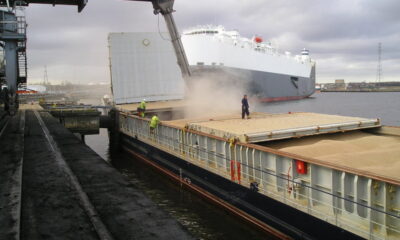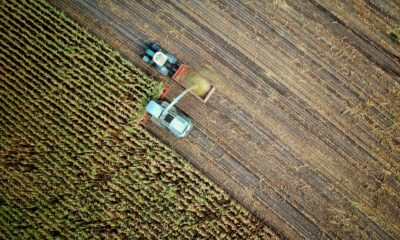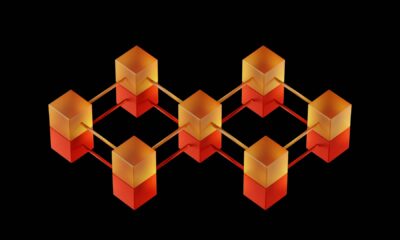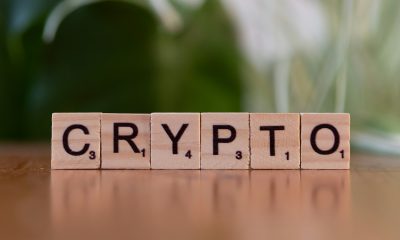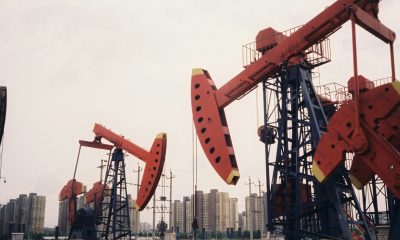Business
TecnoCientifica’s Gus Caneda Talks Blockchain & Innovation in Agricultural Supply Chains
For years, blockchain has been promoted as the solution to all sorts of problems in agricultural supply chains. However, in a recent WEF survey, just 1 in 3 agricultural supply chain leaders said their blockchain transformation projects had delivered positive results. To understand what’s behind this expectation vs reality gap, we catch up with TecnoCientifica’s Gustavo Caneda.
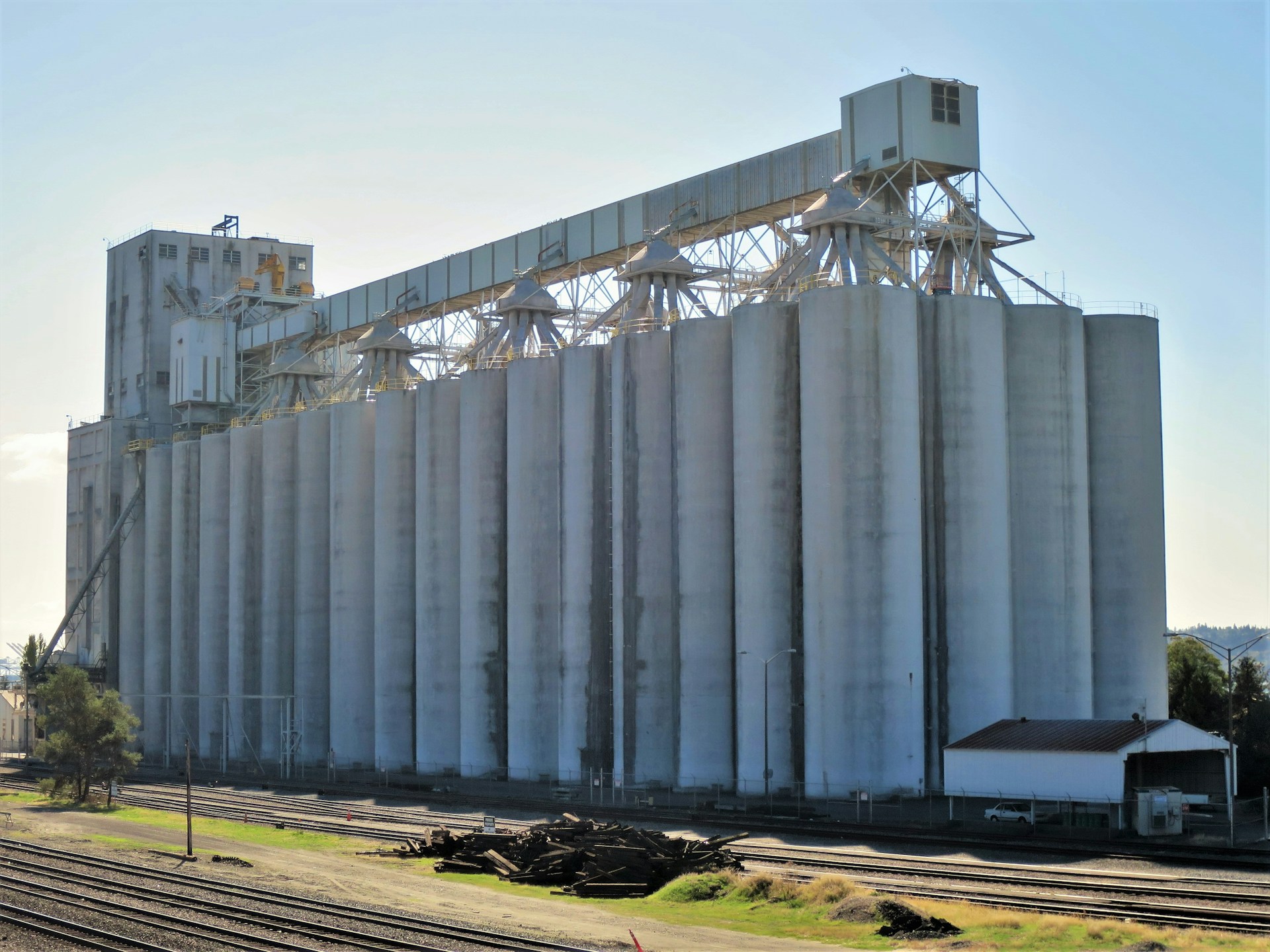
For a number of years now, blockchain technology has been touted as the panacea to all manner of challenges. Crudely stated, the theory goes that a little immutability is all we need to fix everything from access to financial markets to messy, opaque agricultural supply chains. And while AI may have stolen its thunder in recent years, interest in blockchain is still very much alive and kicking behind the scenes. Particularly in agricultural supply chains.
In one example from several months ago, the World Economic Forum (WEF) surveyed 200 agricultural supply chain industry leaders. 86% of respondents believed blockchain offers competitive advantages. 78% had experimented with blockchain. And 71% expect the volume of blockchain projects to increase.
However, for all the bullish optimism on the potential of blockchain technology in agricultural supply chains, there’s one figure in particular that stands out. Only 1 in 3 “blockchain transformation projects” had delivered positive results. Or, read another way, 2 in 3 “blockchain transformation projects” had failed to live up to expectations.
This immediately raises some serious questions. How do we explain the expectations vs reality gap? Is there any hope that this gap will improve? And why are so many blockchain projects in agricultural supply chains failing to live up to expectations?
To attempt to find one answer to these questions, we spoke with Gustavo Caneda from TecnoCientifica, an agri-tech company based in Argentina. What follows is an edited version of our conversation.
Blockchain & Innovation in Agricultural Supply Chains: A Conversation With TecnoCientifica’s Gustavo Caneda
B2I: Blockchain technology has been promoted as a solution to many agricultural supply chain problems for years now. And yet, based on the surveys we’ve seen, it seems it’s not living up to expectations. What’s your take on this?
Gustavo: Let me give you one way of thinking about this by way of an analogy.
Imagine you were in charge of border security for a country during COVID-19. So you do what many countries did; you require people entering the country to present a certificate proving they’d tested negative for COVID-19.
Now, if I were a blockchain person, I might be tempted to sell you a blockchain solution. And, maybe it will help. After all, if you can track and trace every person and every test certificate with provable authenticity, then all your problems are solved. Or, at least, that’s how the sales pitch sometimes goes.
But what if the real problem was test accuracy? And maybe we also have a problem because test certificates are valid for 48 hours, so we never detect the people who get a case of COVID-19 in the 48 hours after they were tested.
Obviously, blockchains can’t solve any of these problems. Just because someone has their test results on the blockchain, it doesn’t make those test results any more reliable than they already were.
This is very similar to some of the problems with agricultural supply chains. It doesn’t matter what blockchain we use if the problem we want to solve is actually rooted in the tests and protocols we use. And yet, there are people in the blockchain industry telling executives — executives who maybe don’t have the time to do their own research — that, yes, blockchain can solve certain agricultural supply chain problems which, quite frankly, it can’t. Or at least, not entirely.
B2I: Can you give an example of this in agriculture?
Gustavo: Absolutely. Let me give you an example that’s very close to some of the work we’re doing at TecnoCientifica — the importance of grain testing.
On a caloric basis, grains account for more post-harvest losses in agricultural supply chains than any other agricultural commodity. How much exactly depends on where you look. In developing countries, it can be as high as 50-60%. But even in developed nations, losses can be higher than you might expect. For example, WWF’s Markets Institute recently published some research that found in-field losses alone wipe out as much as 4-5% of grains in the U.S., which was higher than previously thought.
But here’s something interesting. The WWF report wants to promote data sharing as the “above all else” solution. Which I guess makes sense given the interests here; in the same way the blockchain person wants to sell their blockchain solution, the WWF also wants to sell its market data products. [Editors note: Gustavo is referring to a quote by Katherine Devine, director of business case development for WWF’s Markets Institute: “Measurement at the farm level is critical, but perhaps even more importantly, traders and producers must globally share loss data across their supply chains.”]
Now, I don’t want you to misunderstand me here, so let me preface this next bit by saying that data sharing is important — we can’t identify the scale of a problem without it. Sometimes we can’t even identify problems to begin with.
But here’s the thing — while sharing data is nice, it is only as good as the data we’re sharing. And currently, just about every stage of our agricultural supply chains leaves a lot to be desired when it comes to collecting quality data.
I’m not just talking about the ‘resolution’ or ‘accuracy’ of the instruments we’re collecting data with, either. In our experience, 99% of the problems we see with testing and data collection often come down to questions of sampling. These are questions like how many samples we take? How well are my sample points distributed across a field or a load of grain? Do I aggregate multiple samples or do I test each one individually? These sorts of questions.
Let me give you a real example of what I mean here. When ships come into port, their loads will usually be tested by one of the big certification companies like Intertek or Bureau Veritas, so I think it’s safe to say that these tests are at least somewhat accurate. But what you might not realize is how those lots are sampled. Yes, they take multiple samples, but those samples are then combined into a single bulk sample that’s sent to the laboratory.
Now, in many cases, this single bulk sample will be reasonably representative of the load. But it can also miss many problems. For example, maybe a ship has a leaking deck hatch, but maybe that leak is only causing a small portion of the load to get wet. This could easily be missed with the bulk sampling method, but it could also be enough to cause moisture hotspots in the load that could lead to all sorts of problems downstream, like the development of mycotoxins.
These sorts of problems exist at all steps of the supply chain — things just aren’t being measured, or if they are, they’re not being measured adequately. So even if we have the most sophisticated blockchain-based data collection and validation system ever created, and even if we share that data with everyone, we can’t miraculously fill in the holes in our data, or procure data that doesn’t even exist.
B2I: What do you think is contributing to the problem of inadequate testing and analysis of grains in agricultural supply chains?
It really depends on where you look, and what we mean by ‘inadequate’. But to give a simple answer, I’d say economics and the business case for proper testing are major contributing factors.
To give you an example of what I mean here, think about grains coming into a grain elevator. These are facilities where farmers can sell or store their grains. And you’ll find that most facilities will conduct some tests on incoming deliveries for things like moisture, but also protein and oil fat. And often, they might test with really good equipment.
But now we run into a few problems. First, there’s the guy at the bench doing the testing — he can only do so many tests per hour. And because of this limitation, we also run into the same bulk sampling problem we spoke about before. The guy at the bench can only handle so many samples in a day, so he ends up just doing a bulk sample. Otherwise, if he wanted to do testing on many individual samples, he’d end up with 500 trucks lined up down the road waiting for him.
Now, obviously the grain elevator operator could just build a bigger lab and employ more lab technicians. That way they could process more samples and get better representivity across each load. But at the same time, maybe this doesn’t make economic sense. For example, maybe it’s cheaper to just deal with the occasional quality or spoilage issue than it is to employ an army of lab technicians.
This is precisely one of the problems we have been trying to solve at TecnoCientifica, and it’s how we developed one of our latest products, the T-Scanner. I can tell you a little bit about this if you’d like.
B2I: Of course, go ahead. We’d love to learn a bit more about the T-Scanner.
Well, first I should tell you about something called a truck probe. It’s a large hydraulic arm that can vacuum samples out of a loaded truck. This is what most grain elevators use to extract samples from trucks.
So what we did at TecnoCientifica was we looked at this and said, “What if we can attach a testing device directly onto the truck probe?” That way, we could speed up the whole process. So we teamed up with Jorgensen SRL, who is a major manufacturer of truck probes here in Argentina, and we set out to develop a real-time grain analysis device that can be attached directly to any truck probe. And that’s how the T-Scanner was born.
Now, the real beauty of this device is that we haven’t just made testing easier and cheaper by eliminating the manual sample handling steps in the process. What we also end up with is much better representativity of the load because we can now test many samples in the same amount of time as it would take the guy doing it the manual way to do one test. And we also manage to do this without making any compromises in precision or resolution — the T-Scanner is just as good as the best laboratory equipment in this regard, and, to the best of my knowledge, miles ahead of any other real-time probe device out there. We now hold a patent for it in over 30 countries, so we really are the first.
Something else we’re also quite proud of is how we designed the final form and function of the T-Scanner. It was important for us that the cost of adoption wasn’t prohibitive. And we also didn’t want to cause any reliability issues. So when we set out to create the T-Scanner, we designed it so it could be retrofitted onto existing truck probes without major modifications, so it’s not like people have to go out and buy a completely new truck probe to use our device. That lowers the cost of adoption, and it also means that if there’s an issue with the T-Scanner, operators can revert to using the truck probe in the old way — that is, by manually extracting and testing samples — so there’s no interruption to their operations.
This also means we’re able to offer licensing and/or OEM deals with other tuck probe manufacturers who want to offer the T-Scanner. And, again, because of how we designed it, it’s not like they need to develop entirely new products around it — they should be able to integrate it into their existing designs quite easily.
B2I: So, to go full circle here, would you say that the technologies you’re developing have more potential to revolutionize agricultural supply chains than blockchain technology?
Gustavo: The self-interested part of me would love to say yes. And I’d love to make you believe that the T-Scanner is the most revolutionary thing on the market. But maybe I should give you a more reasonable response, and maybe I can even talk about some other buzzy technologies like AI, which I think is a really good example of the same expectations vs reality problem you first wanted me to talk about.
So, if you listen to certain people right now, they will tell you that AI has the power to solve everything. If we have a problem with spoilage in our agricultural supply chains, then point AI at it and it will solve the problem, they will say. And this is quite similar to some of the beliefs that have been promoted around blockchain — it’s seen as this magical technology that can solve almost anything. But, at least when it comes to AI, I think it’s quite non-controversial for me to say that AI is only as good as the data we give it. And I’d argue the same for blockchain.
Seen like this, I guess you could say that something like our T-Scanner is really an enabling technology. We enable the collection of large volumes of high-quality data which, if someone wants to, they can then feed into whatever blockchain or AI they want. Actually, an interesting point here that might give a good practical illustration is the AI we developed for the T-Scanner.
Of course, I’m not talking about LLMs or any of the new shiny things everyone is talking about today — we don’t want the T-Scanner hallucinating or anything like that. But what we do have in the ‘brains’ of the T-Scanner is more of a narrow AI. Specifically, it’s a Partial Least Squares model, what we call PLS for short. It’s quite commonly used in all sorts of laboratory equipment.
Now, the specifics of the model don’t matter so much here. But at a high level, what the model does is it interprets hundreds of different signals and then tells us what all those signals mean. For example, how much protein there is. And when we develop this PLS model, it works like many other machine learning applications. First, we have to train it on lots of high-quality data.
So why is this interesting? Well, I think it illustrates the two sides of the coin quite nicely.
On one side, we have the AI that makes the T-Scanner a much better instrument — I’m not sure if we could hand-code a normal algorithm that could compete with our PLS model. Then, on the other side, we also have the data that we use to train the model. If we didn’t have good quality data to begin with, then it doesn’t matter how much AI we used, the T-Scanner would never be a good instrument.
Hopefully what you can see here is that neither technology is necessarily more revolutionary than the other. Each has its place and, more often than not, neither one can solve every problem. This applies to anything, from blockchain to AI, and even to our T-Scanner.
So to go back to your original question about why blockchain has disappointed so many people, it’s maybe because people are being led to expect too much from it — they’re expecting a panacea. But as we’ve seen, no such thing exists.
B2I: Gustavo, thank you for speaking with us. Where can people find you if they’d like to learn more about you and TecnoCientifica?
Gustavo: If you’d like to learn more about me or get in touch, the best way would be through my LinkedIn profile. Or, for my company, the best place would be the TecnoCientifica website.
__
(Featured image by Chris Linnett via Unsplash)
DISCLAIMER: This article was written by a third party contributor and does not reflect the opinion of Born2Invest, its management, staff or its associates. Please review our disclaimer for more information.
This article may include forward-looking statements. These forward-looking statements generally are identified by the words “believe,” “project,” “estimate,” “become,” “plan,” “will,” and similar expressions. These forward-looking statements involve known and unknown risks as well as uncertainties, including those discussed in the following cautionary statements and elsewhere in this article and on this site. Although the Company may believe that its expectations are based on reasonable assumptions, the actual results that the Company may achieve may differ materially from any forward-looking statements, which reflect the opinions of the management of the Company only as of the date hereof. Additionally, please make sure to read these important disclosures.

-

 Crowdfunding1 week ago
Crowdfunding1 week agoStar Citizen Funding Soars as 2025 Becomes Its Most Successful Year Yet
-
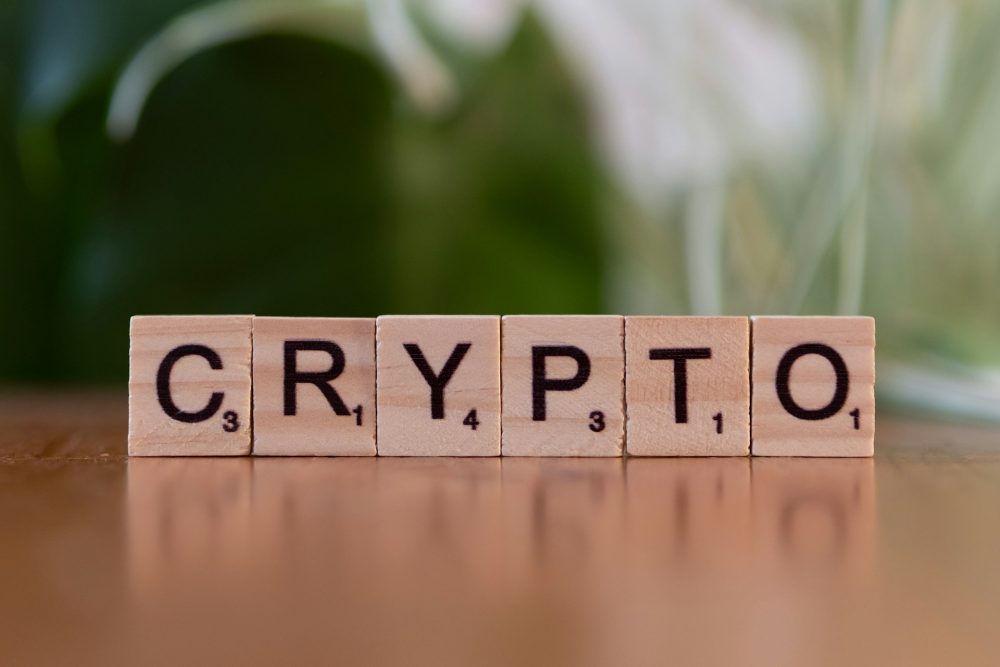
 Crypto8 hours ago
Crypto8 hours agoAAVE Community Challenges Aave Labs Over Governance and Control
-
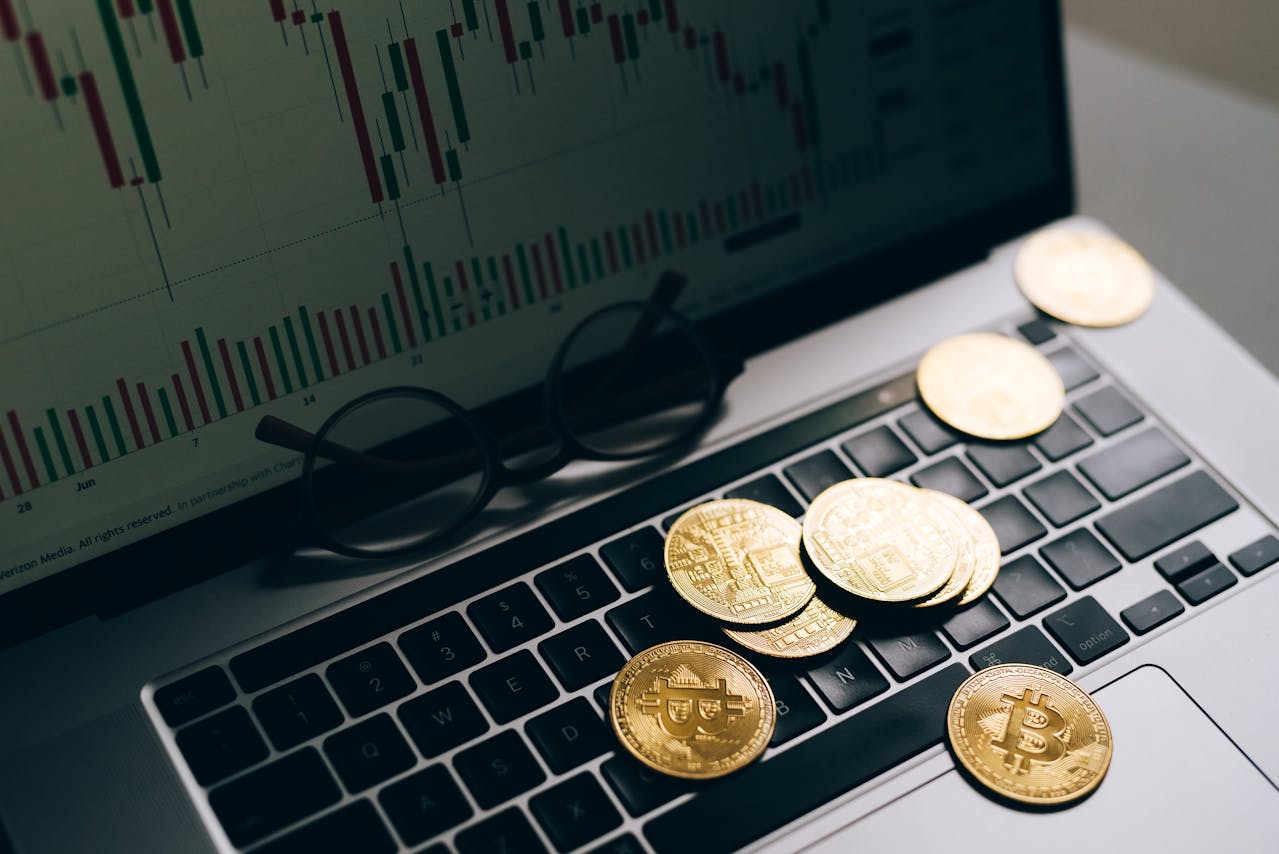
 Crypto1 week ago
Crypto1 week agoCrypto ETF Inflows Signal Renewed Market Confidence
-
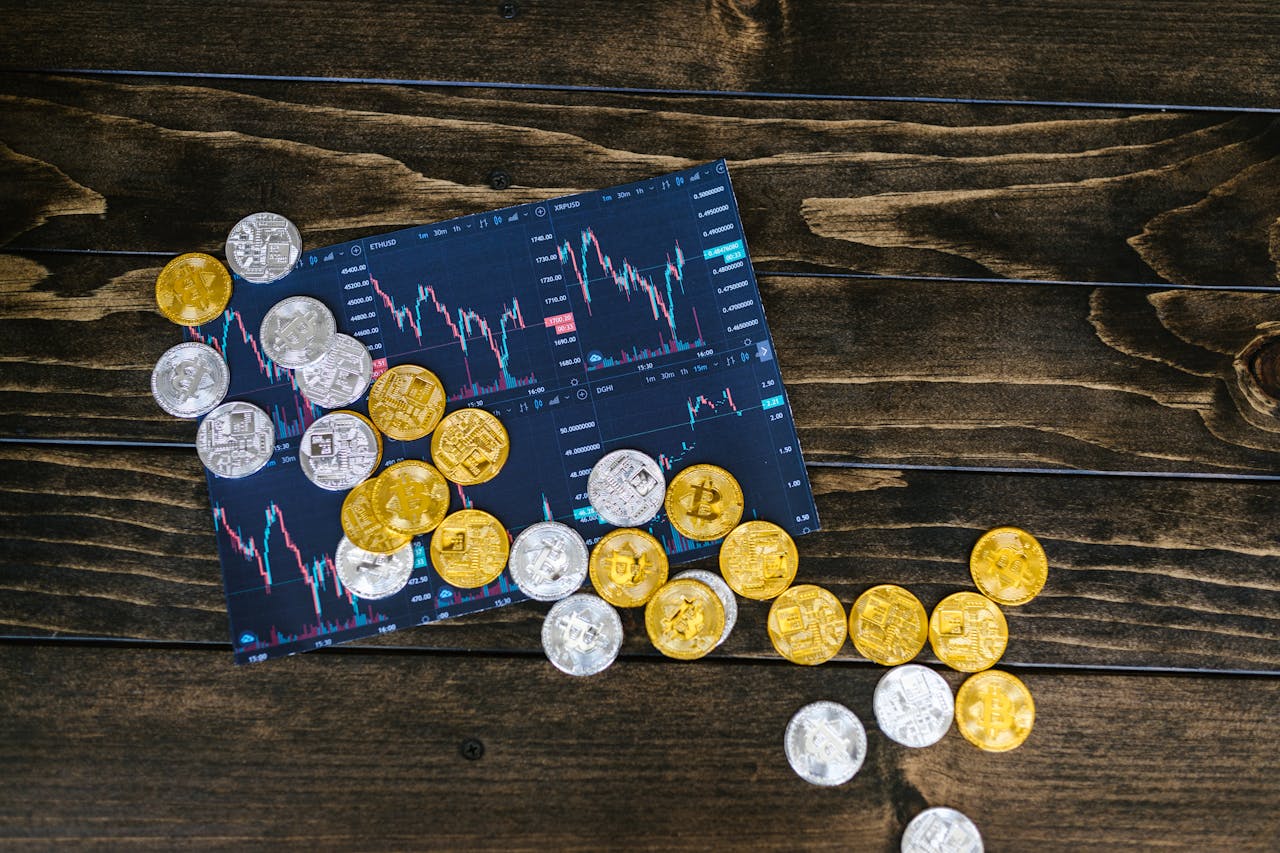
 Fintech2 weeks ago
Fintech2 weeks agoKraken Acquires Backed Finance to Boost RWA Strategy Ahead of 2026 IPO


